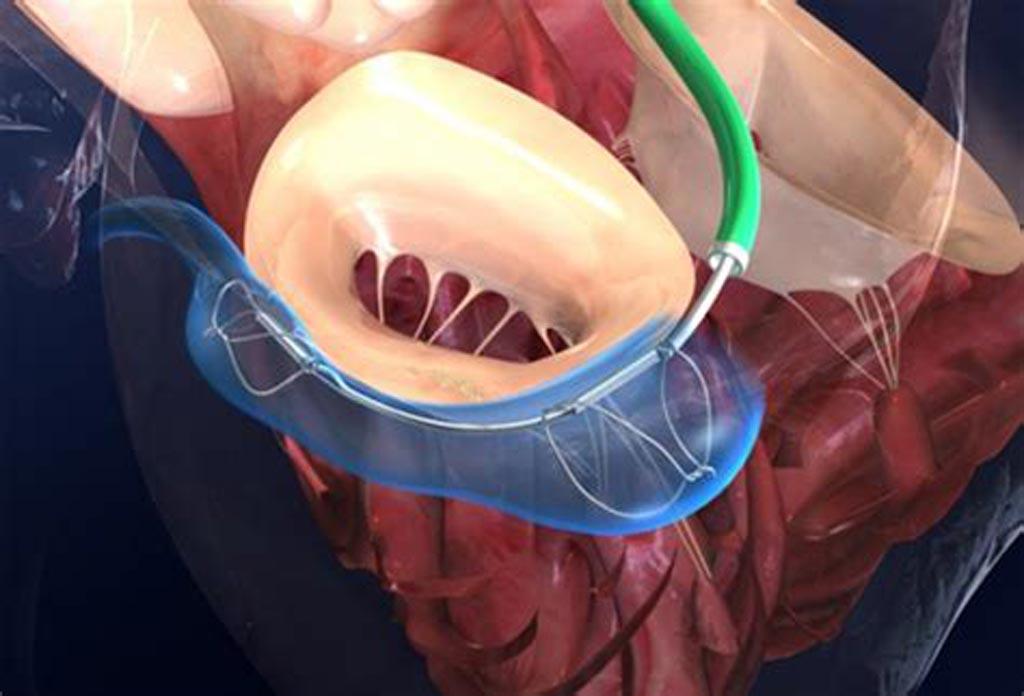The mitral valve allows blood to flow from the left atrium to the left ventricle during ventricular contraction and prevents backflow during relaxation. Mitral regurgitation occurs when the mitral valve does not close properly during ventricular relaxation, allowing blood to flow backward from the left ventricle to the left atrium. Mitral valve annuloplasty rings aremedical devices used to repair a dysfunctional mitral valve and correct mitral regurgitation. These rings are implanted around the mitral valve to reshape and reduce the valve annulus, improving leaflet coaptation and preventing backflow of blood.
Types Of Mitral Valve Annuloplasty Rings
There are different types of annuloplasty rings available for mitral valve repair depending on their design and materials. Some commonly used rings include:
- Rigid Complete Rings: Made of rigid material like metal alloys, these maintain a fixed ring shape. They are durable but can prevent physiological changes in annular dimensions.
- Semi-Rigid Rings: Composed of polytetrafluoroethylene or carbon fibers combined with solid geometry, semi-rigid rings allow some flexibility. They mimic natural annular motion better than rigid rings.
- Flexible Incomplete Rings: Constructed of flexible material like silicone or polytetrafluoroethylene, flexible rings only partially encircle the mitral annulus. They are very compliant and restore normal annular dynamics.
- Adjustable Rings: Allow intraoperative adjustment of ring size and shape. The surgeon can modify and optimize the repair based on valve function tests.
Surgical Procedure For Mitral Valve Annuloplasty Ring Implantation
Implanting a mitral annuloplasty ring involves open-heart surgery where the patient is placed on cardiopulmonary bypass. The heart is accessed through a full median sternotomy or smaller right thoracotomy incision. The mitral valve is exposed and any pathology like leaflet abnormalities addressed. The diseased or dilated mitral annulus is sized and the appropriately sized ring selected.
Sutures are then placed around the annulus from the atrial side. The continuous suture is tensioned as the ring is slid into place and secured. Additional sutures may be needed between the ring and valve. Proper ring size and positioning is assessed using intraoperative transesophageal echocardiography. The heart is closed in layers after thorough de-airing.
Post-Surgical Care And Outcomes
After mitral annuloplasty, patients are monitored closely in the ICU for hemodynamic stability, bleeding, and heart rhythm abnormalities. Most patients can be extubated within 6-12 hours and move to a regular ward bed in 1-2 days. Oral medications, activity restrictions, and follow-ups are advised for recovery.
Mitral valve annuloplasty with a ring is highly effective for correcting mitral regurgitation. Post-operative echocardiograms show reduction or elimination of mitral regurgitation in over 90% of cases. Studies report 90-95% survival rates at 1 year and 85-90% at 5 years. Complications are few but may include ring dehiscence, endocarditis, and recurrent mitral regurgitation. Overall, annuloplasty ring implantation much improves both survival and quality of life for patients with mitral valve disease.
Advantages Of Mitral Valve Annuloplasty Ring
There are several advantages of using annuloplasty rings during mitral valve repair:
- Precise Annuloplasty: Rings allow for more accurate downsizing and remodeling of the mitral annulus compared to suture-based annuloplasty.
- Uniform Support: They provide uniform three-dimensional support to prevent further annular dilation or distortion over time.
- Improved Coaptation: By reducing and reshaping the annulus, rings enhance leaflet coaptation area for effective mitral valve closure.
- Long-term Correction: Properly implanted rings have excellent long-term durability in maintaining correction of mitral regurgitation up to 15-20 years.
- Physiologic Function: Some flexible rings restore normal annular motions better than rigid designs.
- Standardized Technique: Use of rings simplifies the repair procedure and makes it easier to reproduce.
Newer Developments In Annuloplasty Ring Design
Advancements continue to be made in annuloplasty ring technology. New rings feature:
- Tapered Shape: Designed based on normal mitral valve anatomy for a more physiologic fit and function.
- Three-Dimensional Construction: Provides z-directional as well as circumferential support for stability.
- Adjustable Size: Allow modification of ring dimensions in multiple planes for intraoperative optimization.
- Reduced Rigidity: New materials like polyurethane achieve both flexibility and strength.
Get more insights on this topic: https://savagesoulhub33.blogspot.com/2024/08/mitral-valve-annuloplasty-rings.html
Author Bio
Vaagisha brings over three years of expertise as a content editor in the market research domain. Originally a creative writer, she discovered her passion for editing, combining her flair for writing with a meticulous eye for detail. Her ability to craft and refine compelling content makes her an invaluable asset in delivering polished and engaging write-ups. (LinkedIn: https://www.linkedin.com/in/vaagisha-singh-8080b91)
*Note:
1. Source: Coherent Market Insights, Public sources, Desk research
2. We have leveraged AI tools to mine information and compile it

